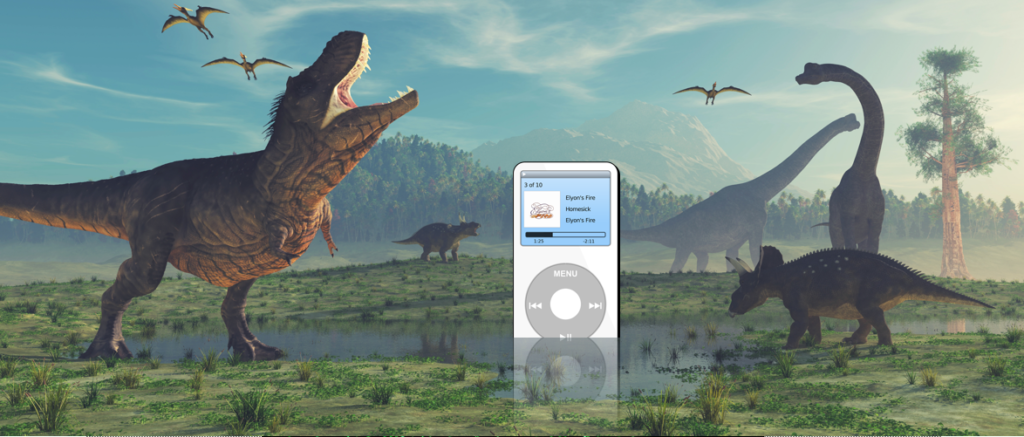
To the dismay of many tech toy and music lovers, the kings of Cupertino made the announcement earlier this week many had been dreading:
Apple is putting the kibosh on its world famous iPod.
After only 20 years, even the coolest, breakthrough innovations apparently run their course, reaching obsolescence. Like an old horse being out to pasture, Apple made the call it will end production of its last iPod model, the Touch.
You can still buy one “as long as supplies last,” quipped Apple, as they shuttered the device that revolutionized portable music after the Sony Walkman’s last gasp.
The iPod was launched by none other than CEO Steve Jobs back in 2001, a triumphant event for the company that changed the ways in which we discovered, played, and organized personal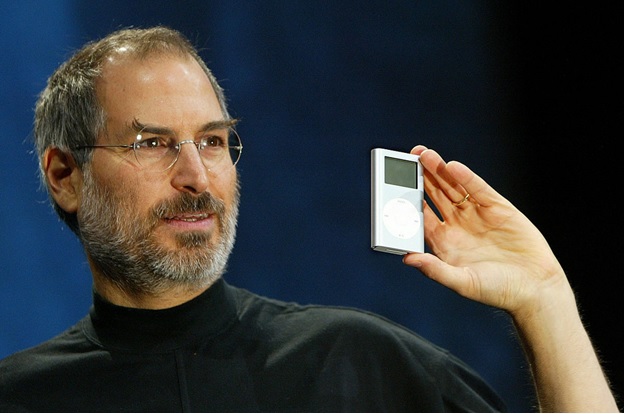 music.
music.
I have long felt the iPod helped to eclecticize and broaden the taste of music lovers all over the world. The term, “guilty pleasures,” came to mean those “out of format,” goofy, shamelessly pop songs that many of us love to listen to from time to time.
iPod broke down many of the format walls we still adhere to in radio. Anecdotally, I noticed that when you asked people to name their favorite kind of music pre-2000, they were liable to tell you rock, country, jazz, hip-hop, and other well-defined genres.
As the iPod became ubiquitous, more and more responded with “I’m into all kinds of music.”
Its “shuffle” feature became a popular way of randomly listening to your collection of songs. And you might say it spawned the birth of the Jack-FM format, hinging its success on the promise that “We play anything.”
Ironically, the death knell of the iPod began to ring when Apple launched iPhone in 2007, a more Swiss Army knife-like product that could multitask, including playing thousands of songs just like its predecessor did.
Collectors will scoop up the last of those colorful Touches. And as 9TO5Mac noted, just 24 hours after Apple’s announcement, the last of the company’s inventory was sold out on its website.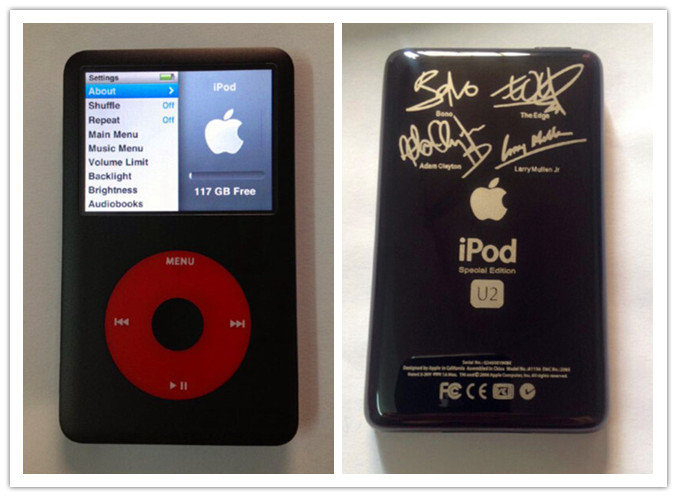 Onto eBay.
Onto eBay.
These devices will undoubtedly become collectors’ items, like the U2 Special Edition model (pictured) my son bought in 2004 the day it came to market. Yup, it now occupies prime space in my sock drawer.
Apple’s momentous decision to dispassionately move on is a reminder about that delicate balance between content and distribution. It’s an especially important as radio companies explore their digital strategies.
Since our Techsurvey 2022 webinar earlier this week, I’m happy to report that many of you are talking about your content and distribution game plans, always a good use of your time.
That’s because it varies for every brand, dependent on your audience and their proclivity to enjoy content on specific gadgets and platforms, as well as budget limitations. In short, most cannot do everything or be everywhere. Most stations and companies are tasked with picking and choosing content lines with care and consideration.
Many years ago, “The Daily Show’s” Jon Stewart was asked to predict how viewers of the future would access his witty, acerbic content. And he flipped off a perfectly ironic and cynical answer: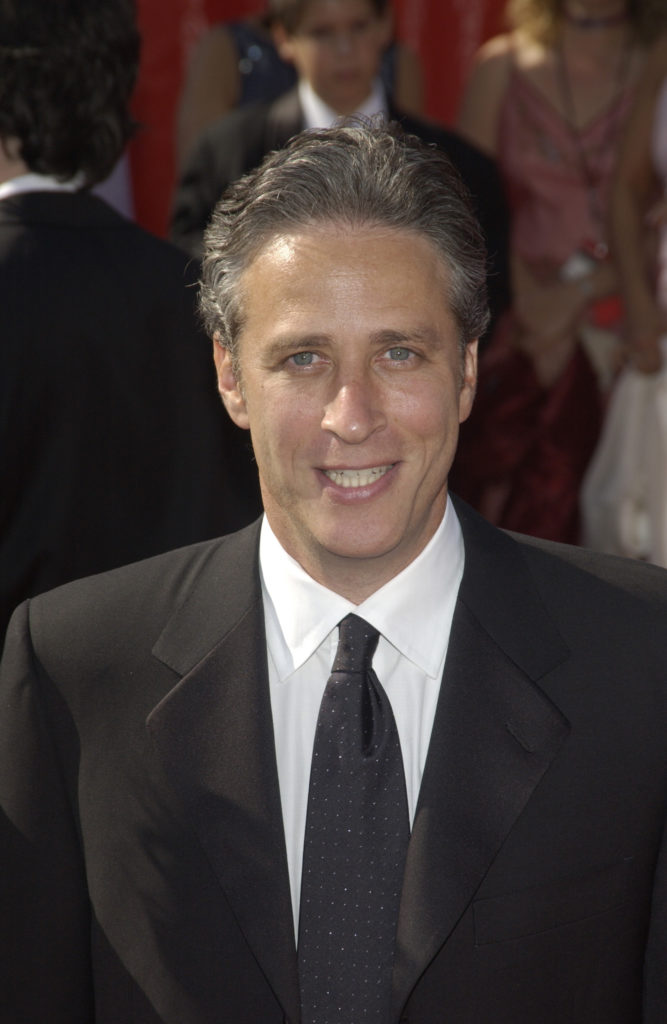
“We make the donuts, we don’t drive the trucks.”
In other words, me and my team are the funny, brilliant programmers – we invent and create the content – or the “donuts.” We don’t have to worry about the “trucks” – or the distribution – how, when, and where that content is pushed out and disseminated.
Well, most of us do have to sweat both the “donuts” AND the “trucks.” We’re charged with making great radio content, and determining the best distribution tributaries to get it out there to the largest and most important audiences on the devices and platforms they hold dear.
We’ve come a long way since transmitters and towers. They, of course, will still be with us for years to come. Broadcasting isn’t going anywhere. But still….
Digital distribution is on a fast track, forcing radio strategists to grapple with who gets what, when, and where. And oh yeah, what does it cost?
Every year in Techsurvey, we track the way core radio fans enjoy the content from their favorite stations. Over the past decade or so, “traditional” distribution – listening on “regular” AM and/or FM radio – has diminished.
On the other side of the spectrum, digital access has grown – quickly. We now track it at 35%, a significant percentage for the average station. When we look at discreet subgroups – Millennials, fans of Alternative and CHR, for example – that digital usage slice of the pie is considerably larger:
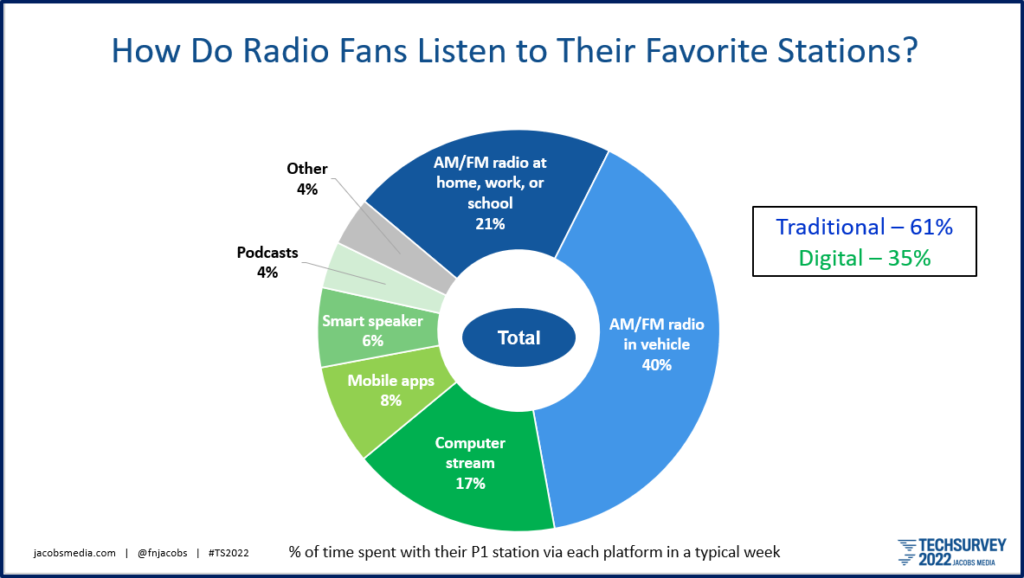
Those digital touchpoints – streaming on computers, smartphone apps, and smart speakers, in particular – have become true game-changers for radio broadcasters, especially those who have made intelligent investments in developing apps, skills, websites, and other content pathways and outlets. Add to that a strong social media and video presence on the platforms that matter to audiences, and you’re looking at a very different environment than when yours truly last programmed in the 80’s.
During the early days and months of COVID, these “trucks” were key conduits to radio content as many people found themselves huddled at home without a “regular radio” in sight.
But there’s a catch, and Apple just provided us with a timely reminder.
Planned and executed properly, you own your content. It’s proprietary, something no one else in the market or the tech world can claim. For great radio stations, we’re talking about personalities, shows, and hosts, as well as merch, event marketing, and charitable fundraising . On the less tangible side, there’s community connections, relationships, habit, and brand tradition.
But you don’t own your music or your syndicated programming for that matter. Anyone can now create great playlists with music every bit as good as yours (and commercial-free!). And while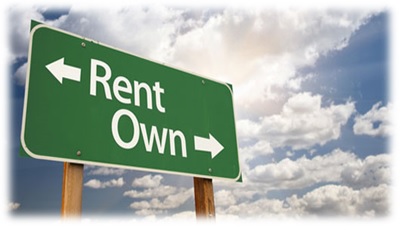 national personalities and great programs can become part of a radio station’s schematic, you don’t own them. They’re owned and produced by someone else. In other words, you’re renting them.
national personalities and great programs can become part of a radio station’s schematic, you don’t own them. They’re owned and produced by someone else. In other words, you’re renting them.
When Lori Lewis joined Jacobs Media more than a decade ago, we talked a lot about the rent/own relationships, and how assets tend to fall into one group or the other. This was especially relevant in the early days of social media, particularly when Mark Zuckerberg was changing his rules faster than most of you change your clocks or your rate cards.
That’s why Apple’s announcement resonated with me. Just like that, they ended production of a once-wildly popular device we all owned. They also own their smartphones and their store, as does Google, Samsung, and others. They are not beholden to radio or anyone else to continue to make, manufacture, update, and service these devices and platforms.
Similarly, some wealthy wild man could purchase a widely known and heavily used social media platform, and start changing the rules.
Oh wait – that’s happening.
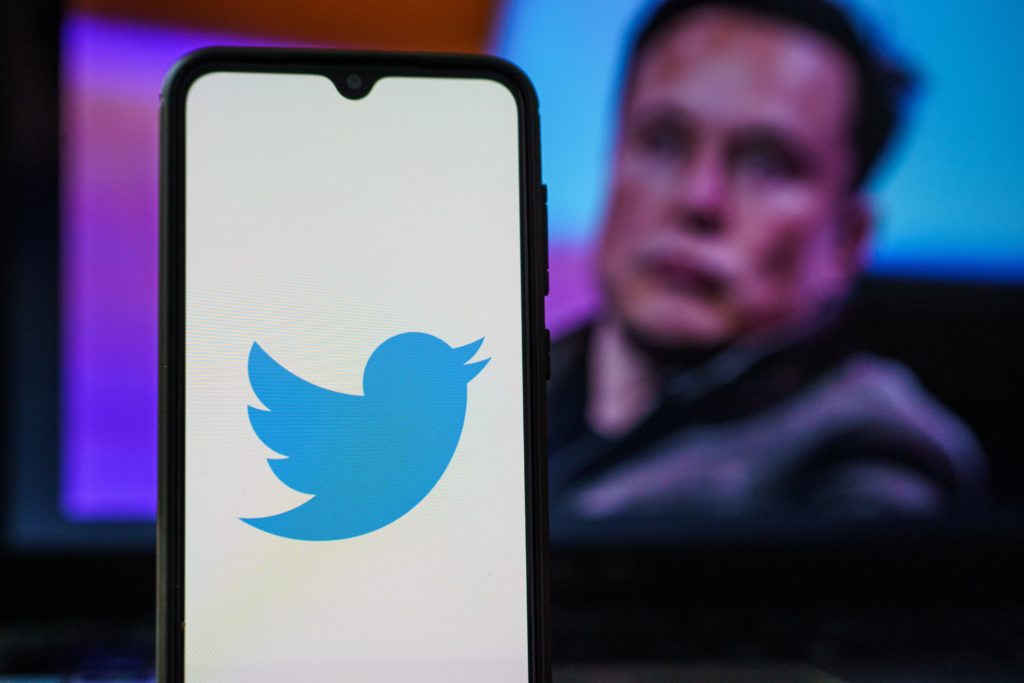 What will the “Twitter Rules” look like a year from now? I don’t know. Neither does Lori or any of you.
What will the “Twitter Rules” look like a year from now? I don’t know. Neither does Lori or any of you.
Musk could start charging brands “rent” to reside on Twitter, or perhaps institute fees dependent on the number of follows your brand has amassed. If he’s successful with whatever new policies he institutes, there’s nothing to stop other social media giants from following suit. After all, isn’t that how paywalls were established by the print media?
Or the car companies, for that matter. Decisions by any of the OEMs to eliminate AM radio or (gasp!) FM, relegating radio access to apps like TuneIn are not beyond the realm of possibility. In fact, those decisions are on the table inside many of their boardrooms.
By and large, these decisions revolving around “trucks” are being made without the NAB or radio owners in the room. They are reminders that we can only “control the controlables.” Everything else is off the table.
That’s why old sayings are often steeped in the truth. How many times a day does someone utter, “Content is king,” and you do an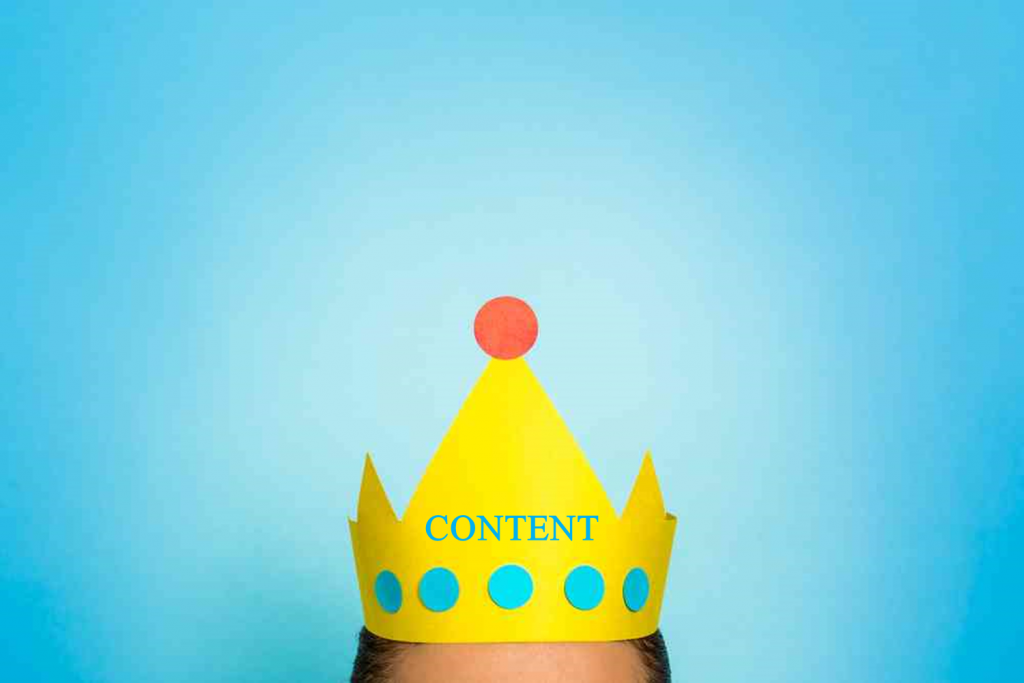 eyeroll. It’s true, of course. Always has been, and likely always will be.
eyeroll. It’s true, of course. Always has been, and likely always will be.
But without great and meaningful distribution, all your wonderful programming, personalities, events, and other assets will be stunted, diminished, or even blocked. The “trucks” matter, perhaps now more than ever.
Aligning your content and distribution strategies is a wise and propitious activity that can separate the forward-thinking companies from those still pining over the decline of those transmitters and towers.
If you need help with this, don’t hesitate to ask. More and more, this is how we’re spending our time at Jacobs Media these days.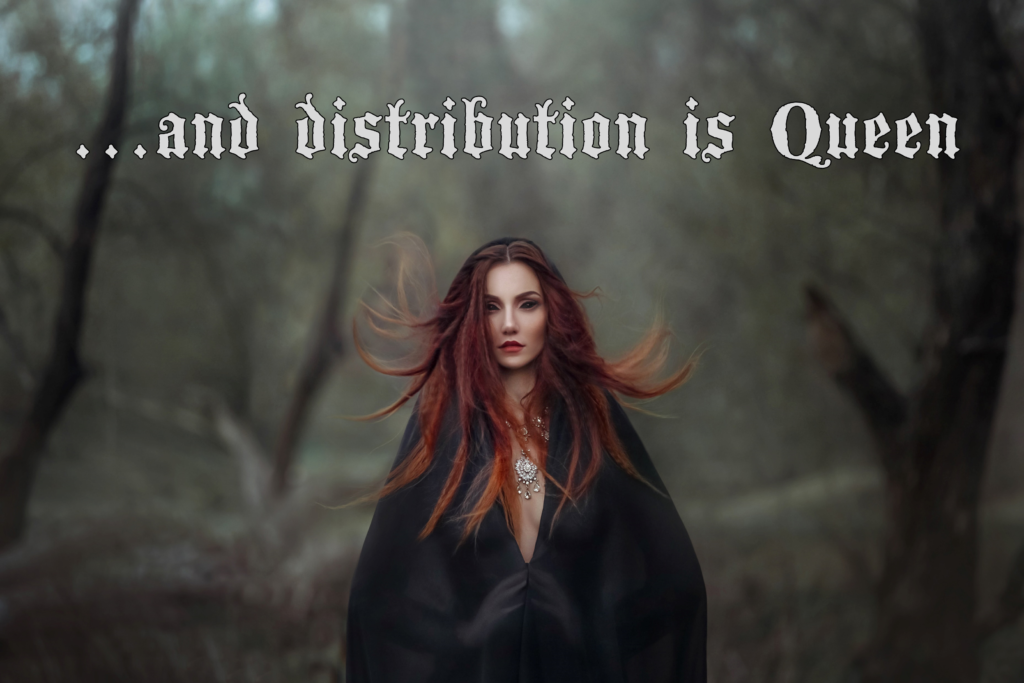
The next time you hear someone unnecessarily uses the old shopworn cliché to remind you that your content is sovereign, paramount, and all-important, remind him or her your distribution matters, too. Perhaps now more than ever.
Content is, in fact, king. But distribution is queen. And she’s not always in the most charitable of moods.
You’ve got to watch out for those wild truck drivers. And those crazy queens. You never now what they’re going to do.
BREAKING: As I was about to click “publish” on this post, I received several notifications that Elon Musk has put his $44 billion offer to purchase Twitter on hold over spam accounts. Stay tuned.
- AI: Disrupting The Disruptors - January 31, 2025
- Appreciating What We Have (When Our Lives Aren’t In Jeopardy) - January 30, 2025
- AI: Oh, The Humanity! - January 29, 2025



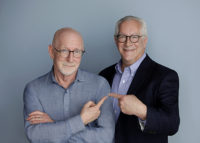
kreative klear kompelling krucial kaptivating kontent is king
Indeed it is, no matter how you spell it.
Fred, the important distinction you draw between content and distribution reminds me of one of my favorite quotations.
“Amateurs talk about strategy. Professionals talk about logistics.” ~ Gen. Omar Bradley
I thought of General Bradley’s “logistics” when I heard the most recent news from the Ukraine/Russian War. Things change, but not that much.